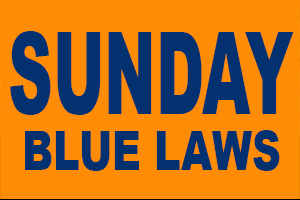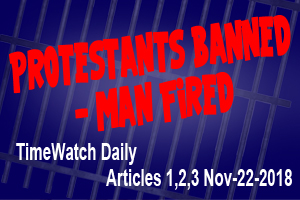
October 08, 2015:
The State of Homelessness in America 2015
April 1, 2015
On a single night in January 2014, 578,424 people were experiencing homelessness — meaning they were sleeping outside or in an emergency shelter or transitional housing program. From 2013 to 2014, a period of ongoing recovery from the Great Recession, overall homelessness decreased by 2.3 percent and homelessness decreased among every major subpopulation: unsheltered persons (10 percent), families (2.7 percent), chronically homeless individuals (2.5 percent), and veterans (10.5 percent).
- 34 states had decrease in overall homelessness, while 17 states saw increases. 40 states had decreases in the number of people living in unsheltered locations, including the street, cars, and abandoned buildings.
- The national rate of homelessness fell to 18.3 homeless people per 10,000 people in the general population, but the rate in individual states ranged from 120 in Washington, D.C. to 7 in Mississippi.
- The rate of veteran homelessness continued its descent of the past several years to 25.5 homeless veterans per 10,000 veterans in the general population, but the rate in individual states ranged from 146 in Washington, D.C. to 9 in Virginia.
- The majority of states had decreases in every major subpopulation: family homelessness (32 states), chronically homeless individuals (27 states), and veteran homelessness (28 states).
Click on Link:
http://www.endhomelessness.org/library/entry/the-state-of-homelessness-in-america-2015
How Private Companies Are Profiting From Homelessness in New York City
By Ben Hattem
October 1, 2014, 12:10 pm
Call him M. He lives in Freedom House — the hotel-turned-homeless shelter on Manhattan's West 95th Street, two blocks from a concert hall that the New York Times once dubbed "a palace of performing arts."
M is brash, earnest, often on the lookout for ways to supplement the $15 he says he gets in monthly food stamps. He doesn't like the guards at Freedom House, and he doesn't understand how New York City's Department of Homeless Services (DHS) justifies spending so much money to lodge him there. He's got a budget letter listing the amount that the city pays the shelter every month for the small room that he and a relative share in the dorm-style building, with one kitchen for 400 people. M points bitterly to the total: $3,735. Every Month.
Freedom House is one of New York's private shelters, a collection of former single room occupancy hotels and apartment buildings repurposed to house — warehouse, some would say — the city's homeless population.
Since a State Supreme Court decision in 1979, New York City has operated under a "right to shelter" mandate that guarantees nightly housing for every eligible resident. But the rising homeless population of the city in recent decades has turbocharged DHS's demand for shelters.
Now, NYC counts nearly 57,000 homeless people among its ranks, and that figure also undershoots the real total by failing to account for those who don't enter the shelter system, which DHS estimates to number 3,357 in 2014. Cluster-site and other private shelters house the bulk of the 57,000. The per diem rates have run up, too. They now stand, on average across all private shelters, at almost $80 per night for single adult units or more than $100 in family facilities.
Patrick Markee, deputy executive director for advocacy at Coalition for the Homeless, told VICE News that cluster-site housing was "one of the major policy disasters of the last administration." Freedom House, in particular, he describes as "emblematic of the lunacy of paying $3,000 for a room."
Click on Link:
https://news.vice.com/article/how-private-companies-are-profiting-from-homelessness-in-new-york-city
New York City's homeless find little comfort in shelter system
March 30, 2015 1:00PM ET Updated 6:45PM ET
by Abdulai Bah @africandobah
On a bitterly cold January afternoon, Michelle Young, a single mother of two, does her best to keep the frigid air outside from getting through the windows in her Bronx apartment.
“Usually, I put all the dirty clothes here to keep the cold from coming in,” said Young, pointing to one of the windows of the neat and sparsely furnished home. “The heating is not really that good. There are days when I usually turn on the hot water and oven throughout the night to keep the apartment warm.”
Young’s two-bedroom unit is one of the 3,140 so-called “cluster sites” in New York—privately owned apartments that the city’s Department of Homeless Services (DHS) uses to temporarily shelter families while determining their eligibility for housing assistance.
Young, 43, is one of the nearly 60,000 homeless people currently in New York City’s shelter system, the highest number since the Great Depression.
Under state law , the city is legally obligated to provide shelter to anyone who requests it. But families sheltered in cluster-site units live in poorly maintained buildings plagued by infestations of mice, rats, bedbugs and roaches.
DHS pays agencies such as Aguila to provide apartments for homeless people while helping them find jobs and permanent housing. In a 2013 report , then city Comptroller John Liu demanded City Hall cut ties with the company, after uncovering unsafe and unsanitary practices at its shelters. Nevertheless, in September 2014, the de Blasio administration awarded Aguila a $16 million contract.
Click on Link:
http://america.aljazeera.com/watch/shows/fault-lines/articles/2015/3/30/new-york-citys-homeless-find-more-discomfort-in-shelter-system.html
Problems With New York City's Temporary Shelter Program
September 4, 2015, 5am PDT Emily Calhoun
The cluster-site program, an emergency housing program for homeless New Yorkers, has been criticized as a dysfunctional shelter system, yet the 83-unit building at Clarkson Avenue, in the middle of a gentrifying Brooklyn neighborhood, represents "one of the most complex and intractable challenges confronting" New York City Mayor Bill DeBlasio, writes Vivan Yee for the New York Times.
The program, which pays for homeless people to live temporarily in privately owned buildings, began in 2000, when the homeless population was overwhelming city shelters. But with the city paying over $2,500 per month per family, the Clarkson Avenue building featured in Yee's story highlights the inefficiencies of a system wherein landlords stand to gain more from sheltering homeless people than by providing affordable housing for Section 8 voucher tenants and other low-income renters.
The program was supposed to be temporary, but the number of homeless people living in cluster-site buildings has steadily increased. The money designated to the program is also supposed to provide social services, including building security and employment assistance. However, conditions have deteriorated in these buildings. In one Ditmas Park building, "people loitered in the common areas, openly using drugs. Cockroaches clustered in the light fixture and refrigerator. Doors and windows were broken. The bathroom was moldy and pocked with rodent holes. There was no stove."
Click on Link:
http://www.planetizen.com/node/80761/problems-new-york-citys-temporary-shelter-program
New York milks the homeless for cash
Date 03.04.2015
Author Janosch Delcker, New York City
It sounds like a paradox: Advocates for the homeless in New York City are calling for shelters that house destitute families to be closed and turned into private apartments. Janosch Delcker reports.
The staircase that leads up to Pedro Acevedo's apartment smells of urine and marihuana. The building is located in the Longwood neighborhood of the South Bronx. Almost half of the population here lives below the federal poverty line. The front door of the building is unlocked.
Acevedo, 41, lives in a one-bedroom apartment with his wife and his 9- and 7-years old daughters. The girls share a bunk bed in the bedroom; he and his wife sleep on folding beds in the living room. Technically, this apartment is not Acevedo's apartment. It is a homeless shelter, paid for by the City of New York; one of approximately 3,000 so-called cluster shelters the city provides to homeless families. Now, a controversy has broken out over them. The dispute involves three parties: The homeless of the city and their advocates, who complain about bad conditions; for-profit operators, who make millions renting out the apartments; and the city of New York, which seems overwhelmed with dealing with its homeless population and pays exorbitant rates for the cluster shelters.
In January of 2015, more than 60,000 homeless New Yorkers were sleeping in shelters. According to the DOI investigation, there are 16 cluster programs in New York City. Only nine of them have actual contracts with the city. According to the DOI report, "there are no written agreements for non-contracted sites; rather, the shelter operators simply submit monthly invoices to DHS for payment." And these invoices are hefty. A 2013 investigation of New York Magazine described how - based on "opaque dealmaking and informal handshake agreements" of politically powerful landlords - homeless shelters became a lucrative multi-billion business in the city.
Click on Link:
http://www.dw.com/en/new-york-milks-the-homeless-for-cash/a-18353002







